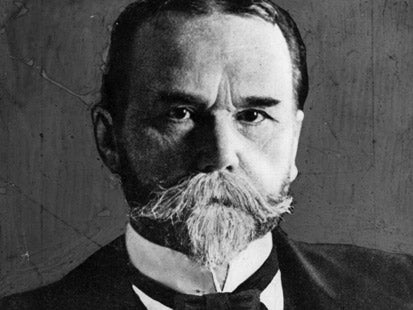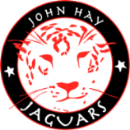About
About John Hay Elementary School
Our History
John Hay Elementary opened atop Queen Anne Hill in September of 1905. The school’s original location, near the corner of Boston and Bigelow Street served the growing population of East Queen Anne Hill. Hay students excelled in literature, English and reading, challenging other schools to reading contests. Art and music were also popular subjects. In 1922, and in response to continued growth, a second building was constructed on an adjacent block.
The population continued to increase and so the decision to build a new John Hay was made in 1982. The new school was built on the site of Luther Playfield, previously the track and field for Queen Anne High School, located across the street. It opened in 1989 with grades K-3, and the following year expanded to K-5.
The original brick building, as well as the original wood-frame building of the “Old John Hay” are still in existence today and now house Queen Anne Elementary School. Learn more about the history of our school.
Our Community
In the 2021-2022 school year, 300 students in grades K-5 came to school to learn from over 50 teachers and staff. We celebrate red, white and black as our school colors and have taken the Jaguar as our nickname and mascot. We are a diverse population celebrating racial heritage including, African American or Black (5%), Hispanic (17%), Asian/Pacific Islander (14%), multiracial (15%), and White (49%). Our reference area serves students from upper and lower East Queen Anne south to Denny Street, bordering Downtown Seattle. Our average class size ranges from 24-28 students, and our average daily attendance fluctuates around 95%. We are one of the highest performing elementary schools in Seattle Public School, receiving the distinguished Washington State Achievement Award for Overall Excellence since 2009 for Overall Excellence and Science Achievement in 2012 and for Growth in Mathematics in 2013.
Our Mission
In keeping with the values of our school’s namesake as well as the students who have come before us, today’s John Hay kids are encouraged to embrace learning and make a difference in the world.
Each student at John Hay receives a solid academic foundation, develops a love of learning, and acquires a sense of responsibility for our school, our community, and our world.
The staff knows curriculum standards, assesses student needs, conveys high expectations to all and delivers differentiated instruction based on best practices and student social/academic needs.
We nurture curious, thoughtful, responsible and resilient young people.
Our school community of staff, parents and children place high value on developing a learning environment that is a safe and caring place. Teachers build relationships with students that provide an atmosphere wherein students can be challenged to take risks and reach for goals that are high and appropriate. Innovative teaching leads to academic growth that is monitored frequently through varied assessments.
We encourage families to volunteer, attend special events, connect and build relationships with teachers, and see the school as a place to be supported, educated and welcomed. We count on family engagement to build a critical link between home and school in order to create optimum success for our learners. The teachers and staff who work at John Hay set high standards for instructional performance as evidenced in student growth and achievement. They consistently work to collaborate with team mates, administration and families to find and implement the best teaching and learning strategies that will have the most impact on learning for students.
Perhaps most importantly, we hold ourselves, our families, and our students accountable to high standards for growth and achievement, personal behavior and positive attitudes so that learning is authentic, owned and inspired. We review data throughout the year and adjust instruction and practice accordingly. Teachers participate in frequent professional development so as to keep ourselves attune to the needs of our students and evaluate our practice.
Our Approach
Today’s highly effective schools find creative ways to meet the needs of the individual learner. John Hay makes such a commitment – to do whatever is necessary to support the needs of every child, from the learner who struggles, to the student who performs above standard. We accomplish this through effective planning and teaching of the core curriculum, strategic and frequent assessment, application of targeted interventions, and supplemental enrichment programs.
We will use research-based strategies that help targeted students.
John Hay will address the needs of every child by continuing to monitor, improve and implement a Multi-Tiered Systems of Support (MTSS). This will identify Students of Concern and advanced learners, based on previous year(s) and current year data. With this data, a plan is created to support the student and the teacher with tier I, II or III supports, and to monitor the students’ progress every six weeks. The John Hay school improvement plan is directly aligned to the district plan of establishing an MTSS process at every school to identify individual needs, high and low, and to provide systems to support them.
The systems listed below are utilized for both Students of Concern as well as our Advanced Learners. We collect data and differentiate instruction to meet individual student needs. The John Hay MTSS structure and supports are for both intervention and extension.
Example: Teachers create lesson plans that included differentiation options for the range of learners in their class. Small group instruction is used to differentiate for both Students of Concern and high achieving learners. Intervention teachers have groups of students that may need support, as well as groups of students that may need extension opportunities. Tutors are assigned to Students of Concern as well as Advanced Learners needing additional opportunities to extend their learning.
Hay professional learning communities regularly analyze student data (reading, math, writing, discipline & attendance) in order to design responsive and differentiated instruction as well as appropriate supports and enrichment including:
- Common Core Aligned Math & Balanced Literacy Instruction
- Center for Collaborative Classroom curriculum (collaboration, community, social development)
- Culturally and Linguistically Responsive Instruction
- Small Group Intervention & Support via Reading Specialist
- Small Group Intervention & Enrichment via Math Specialist
- Small Group Intervention & Enrichment via Early Literacy Specialist
- Small Group Supports via ELL Specialist and ELL IAs
- Socio-Emotional Learning in All Grades (Ruler framework)
- School-Wide Positive Behavior Intervention & Support Plan (PBIS framework), targeted small group and 1:1 intervention
Year end assessments become more formal and summative. The Washington State Smarter Balanced Assessment (SBAC) is a standardized test administered at 3rd, 4th and 5th grade and offers achievement data to the school, the district and the state. Schools use summative data such as this to set school improvement goals through the CSIP (Continuous School Improvement Plan). John Hay’s CSIP as well as the annual School Report are always available for public view.
Targeted and strategic assessment measures are an important factor and practice for highly effective schools. At Hay, we take our data seriously, use multiple measures to gauge student progress, and set school-wide and classroom goals according to the ongoing results we receive.
Interventions – A true test of any school is in how well the school responds to the individual needs of its learners. As students demonstrate unique learning needs, or perform above standard, or have other social, emotional or behavioral needs, a highly effective school must have creative and fluent ways to respond. At Hay, we utilize varied options for intervention to insure every child has the best possible chance for school success, and every grade level and every classroom is provided specific intervention supports.
These varied intervention supplements allow our teachers to reach past the basic curriculum to provide all of our students with a unique menu of learning support tailored to individual need. Most of these programs are made possible through the funds raised and donations made to the John Hay Foundation. The Foundation is overseen and sponsored by our PTSA, developed to provide support and assistance that works to benefit the John Hay learning community.
Supplemental and Enrichment Programs – In addition to the core classroom curriculum, students also experience library science, physical education, music, and visual arts as part of the regular school day programming.
Students have leadership opportunities in Student Council, Library Aides, Safety Patrol, and in roles provided at the classroom level. Each year, 4th and 5th grade students are invited to participate in the Global Reading Challenge for an additional enrichment experience in literacy, as well as Math Olympics which is held after school.
As part of our commitment to teaching students care for their community and world, students in every classroom participate in at least one service project per year designed to respond to the needs of others on a local and/or global scale.
At John Hay, we believe elementary school is a precious time in the life of a child and a family. And while we hold students, parents and staff to high standards, we intentionally invest ourselves in creating a place of learning that inspires the mind, captures attention, raises the bar, develops young leaders, and responds to the needs of others, while making the schoolhouse a whole lot of fun!
Our Namesake

Our school’s name was first suggested by the school board secretary in 1904. John Hay was an American statesman, diplomat, author, and journalist who served as foreign policy adviser to several American presidents. He was perhaps most known for his role as personal friend and private secretary to President Abraham Lincoln from 1861 until President Lincoln’s death in 1865. He is credited for co- authoring a 10-volume biography of President Lincoln in 1890. He served as secretary of state under President McKinley from 1898-1905 during which time he helped negotiate the Treaty of Paris of 1893, which brought an end to the Spanish American War. In addition, he worked to negotiate treaties that gave the U.S. an exclusive right to build the Panama Canal, as well as establishing the Open Door policy in China.
As a young man, he valued learning as evidenced by his love of literacy. He developed a special interest in poetry during his time at Brown University, being named class poet. He went on to publish books of poetry, as well as other historical and narrative works.
